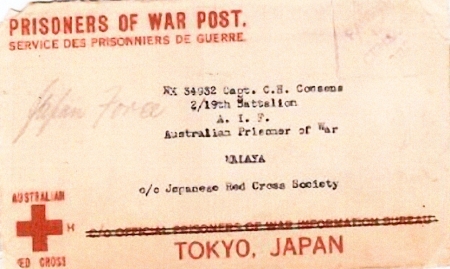The first cover was sent registered to Captain C.H. Cousens, N.X. 34932, 2/19th Battalian A.I.F., Malaya, the registration label No. 1 with a manuscript ‘Mt Wilson’ and it had a purple S. 74 censor’s handstamp. There is a total postage of one shilling made up of the 9d ‘Platypus’ and the 3d blue KGVI stamps, with a partial MT. WILSON/ N.S.W Type 2A postmark , with an illegible date (Figure 1).

The reverse shows a ‘2 OPENED BY CENSOR’ red label and a series of 9 postmarks of which five are reasonably legible, and which read from left to right: G.P.O. SYDNEY/ 19AP41/ 7/ N.S.W -AUST, (——-) WEST/ 18AP41/ 1/ N.S.W-AUST, an identical dated copy of the first mark, AUST FIELD P.O./ 18 AP41/ No. 17 and a repeat of the first, but dated 21AP41. At the top L.H. there is a manuscript ‘From Mrs C.H. Cousens, Bayview Rd., (——-) NSW’ (Figure 2).

The second item is a German Prisoner of War card with (from left to right) a boxed red German censor’s mark with an obscured Oflag VII B, a boxed red Japanese censor’s mark, as well as a dated ‘blind’ postmark 20.5.43 19-11. The card is addressed to Captain Charles H. Cousens, Prisoner of War, Australian Forces, Malaya Camps, c/o Japanese Red X, Tokio (sic) Japan. The sender is identified as Major J.R. Cousens, 242 (VHC), No. 1 Battalion, at the P.O.W. Camp VIIB, Deutschland (Allemagne) (Figure 3).
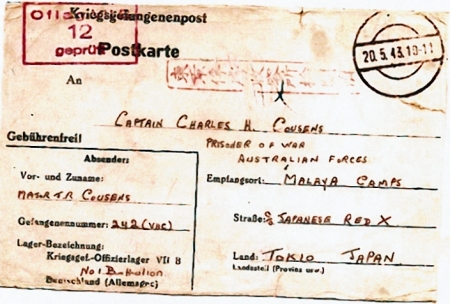
The reverse is dated 14th May 1943 and there is a boxed red Japanese censor’s mark, as on the front. The written message has been transcribed almost completely: “My dear Charlie having been allowed a special card to write to you here goes though I am not hopeful of it arriving. Wonder what news you get. Most shattering has been Dads death after an operation in January. Mum is well. Jessica now in uniform is doing very well. P—-I hear from is now No. 2 of my old outfit in the Sudan. Tim over 6′ (feet) still at Academy. Had most cheering letter from home. R. is huge and bouncing. She gets great joy from (?)hearing you! My (—-) very (—-). Hope all well with you. I think of you often. More next month. Love John. (Figure 4).

Nowadays there is a vast amount of information about Charles on the internet, and in Australia controversy still exists for the Australian Broadcast Commission will air a radio discussion on the Cousens case prior to Christmas, 2006. The on-line Australian Dictionary of Biography gives a more complete background to Charles, but other source material has also been used.
Charles Hughes Cousens (28 August 1903-9 May 1964), army officer and radio broadcaster was born in Poona, India, son of Lieut., later Col. Robert Baxter Cousens and his wife Esther. He was educated in England, including the R.M.C. Sandhurst and was commissioned in January 1924 and served in the North-West frontier in India. He resigned his commission in 1927 and worked his way to Australia, where he married his first wife, Dorothy in 1929, bore him a daughter, before their divorce. He found his niche working at radio station 2GB reading some of his own copy, and he was a popular announcer. He married his second wife Winifred Grace in 1938 and they had a son Robert.
As a Captain in the 2nd/19th Australian Imperial Force he was in command of a rifle company in Malaya prior to Japan entering WW2 in December 1941 (Figure 5).
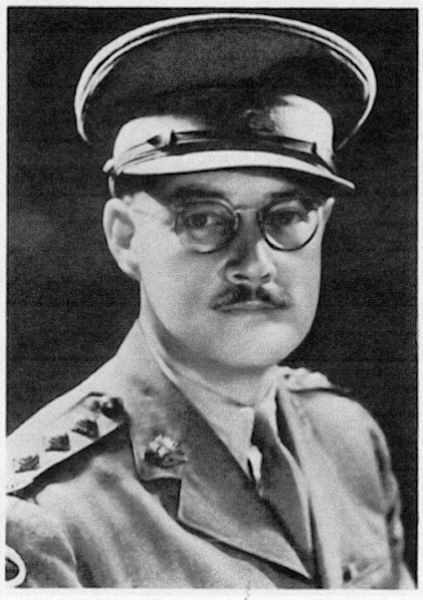
He was badly burnt when demolishing a village, and rejoined his battalion fighting on Singapore Island. He was commended for his leadership in action and promoted temporary Major in February 1942. Soon after capitulation of the Allied forces on 15 February 1942, Malayan A.I.F. headquarters revealed to the Japanese that he had been a radio announcer, but he refused to broadcast on their behalf while in Changi prison (Figure 6).
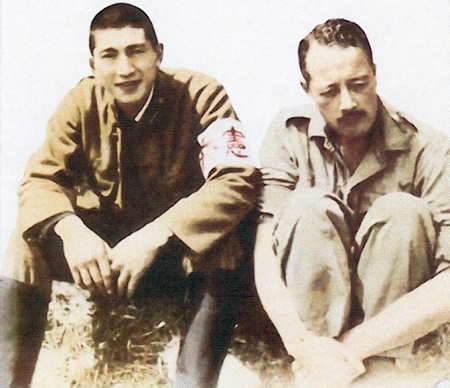
At the end of July he was shipped to Japan and under threat and fear of torture and death, he wrote propaganda, coached English-speaking Japanese announcers and made short-wave broadcasts over Radio Tokyo.
Cousens later claimed the information was of limited use, it was spiked with information useful to the Allies, and he frequently sabotaged his broadcasts by subtle ridicule. He chose the main presenter of the program ‘Zero Hour’, Iva Toguri (later d’Aquino) known as ‘Tokyo Rose’ and she tried to help him undermine the broadcasts. Following the Japanese surrender (‘VJ’ day was 15 August 1945), he was interrogated, brought home to Sydney under arrest, committed for trial, but the charge of treason was dropped on 6 November 1945. The men of the 2nd/19th Battalion elected him to lead the Sydney Anzac Parade. The plan for a court-martial was dropped (politically inexpedient), but he was stripped of his commission, an action largely regarded as vindictive (Figures 7 & 8).
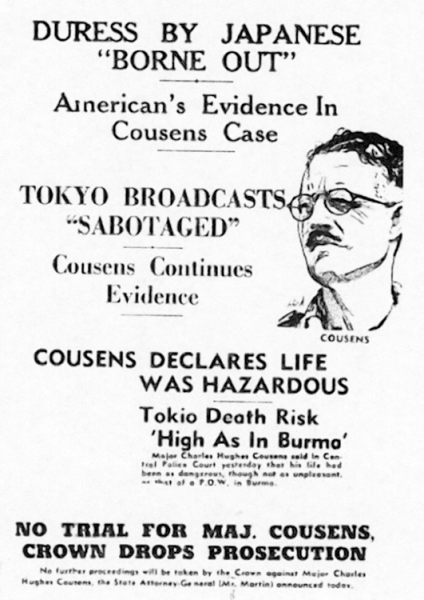
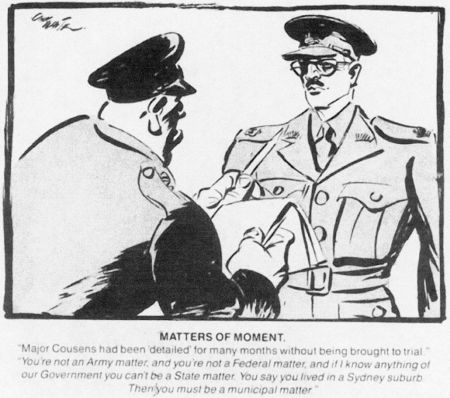
He was welcomed back to 2GB, and in 1957-59 he was a newscaster on Channel 7 (Figure 9).
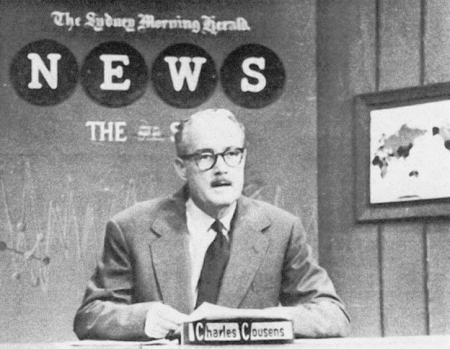
In spite of Cousens’ defence witness assistance for Iva d’Aquino in the U.S.A. in 1949, she was gaoled for treason. Cousens died of cardiac disease at his Greenwich, Sydney home in May 1964, survived by his wife and the 2 children of both marriages.
Whereas the Australian War Memorial lists Charles Cousens as an Australian P.O.W. in WW2, there is no such listing for his brother Major John R. Cousens. A British WW2 P.O.W. site however lists John Cousens, a member of the Durham Light Infantry as a prisoner in Oflag 7B in Germany. After a repeated internet search for John he was found at a site of another WW2 P.O.W’s story entitled Escape Diary of Edward James Pratt. The diary commences: “On Saturday 14th April (1945), 1500 officers left Oflag VII B together with the German Commandant & staff. The reason for the move was the advance of the Allied forces. (The blame for what happened is laid at the door of the Germans, for the prisoners did not have Red Cross flag identification and they were strafed by planes of the Allied forces). We had seven killed & about forty-three wounded, of which three died within twelve hours. Victor’s Company Commander Major John Cousens was wounded in the leg and had to have it amputated”.
A map of the region of the P.O.W. camp at Eichstätt, Germany as well as a winter scene of the camp showing prisoners is shown in Figures 10 & 11.
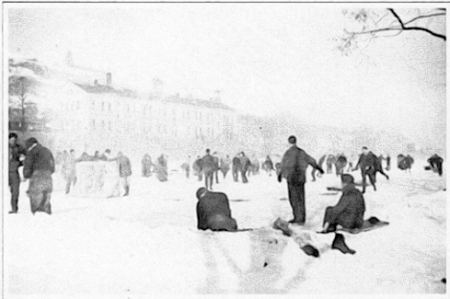
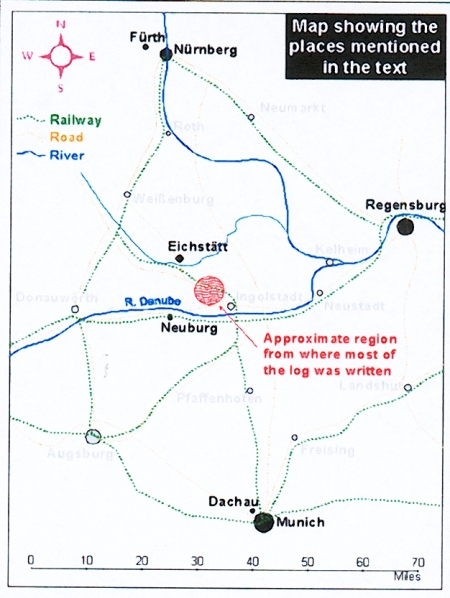
This is the sum total of what has been learnt of Major John R. Cousens, although the vendor of the 2 items states that both Cousens brothers were Australians.
Addendum: I now have the transcript from ABC Radio National’s Media Report dated 21 December, 2006, which was a discussion between Lachlan Colquhoun (documentary maker and journalist) and Antony Funnell presenter). The discussion was interesting, particularly the strong involvement of General Douglas Macarthur, for Cousens was on Macarthur’s list of people whom the General wanted to be investigated for treason. I learnt that there will be another radio program in 2007, to be called ‘Radio Treason’.
Yet another addendum: A Prisoners of War Post/ Service des Prisonniers de Guerre cover addressed to NX. 34932, Capt. Cousens, C.H., 2/19th Battalion, A.I.F., Australian Prisoner of War, Malaya has become available on eBay from the same vendor (Figure 12).

The reverse shows that it was sent by his wife, Mrs. Grace Cousens, “Shesta,” Mount Wilson, N.S.W., Australia and it has a red ‘3 Opened by Censor ‘ label as well as the purple handstamp, ‘3/ PASSED/ BY/ CENSOR/ 396′ (Figure 13).

Yet another undated and almost identical except for the sender, cover front and reverse, is seen in Figures 14 and 15.
